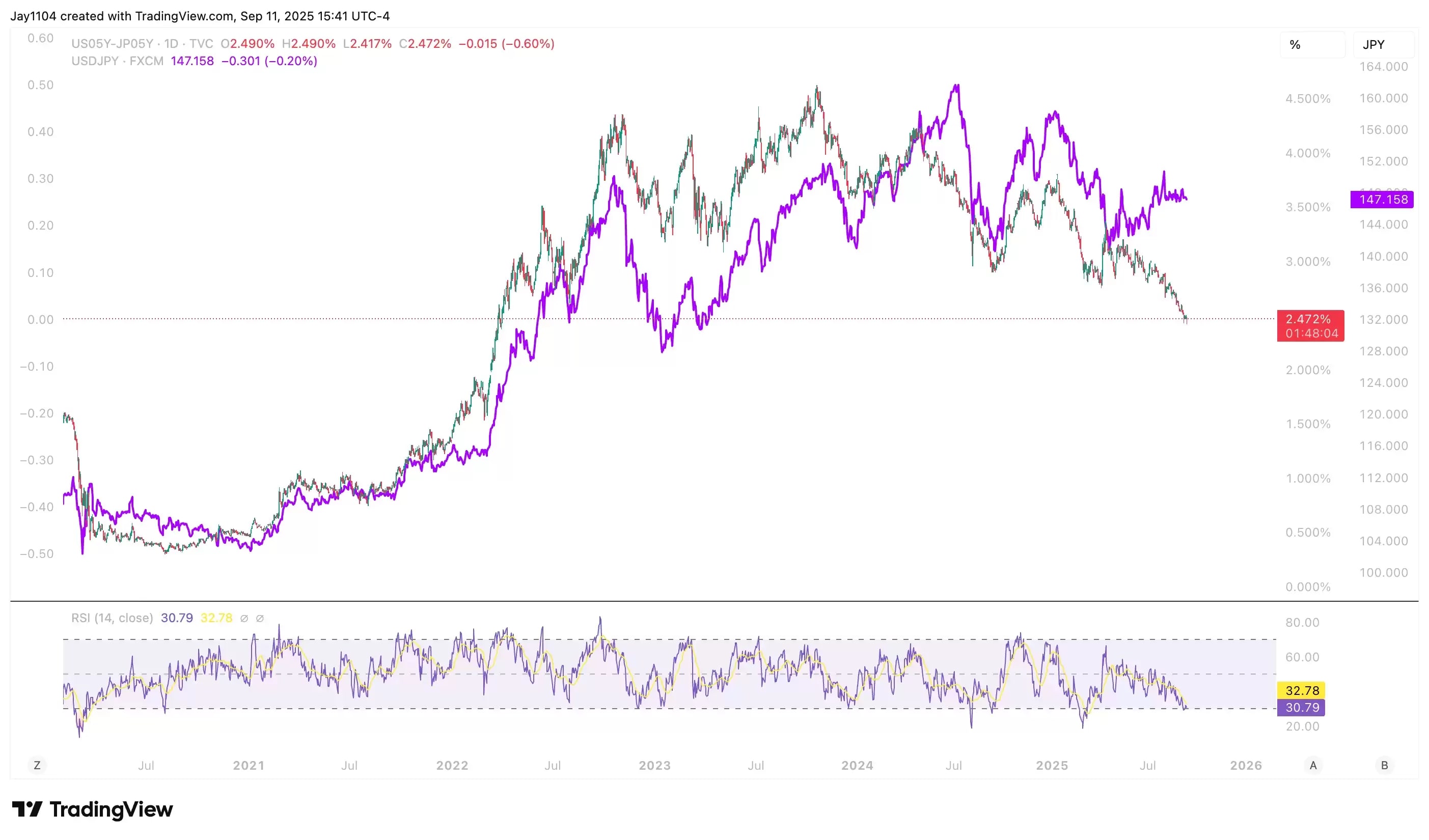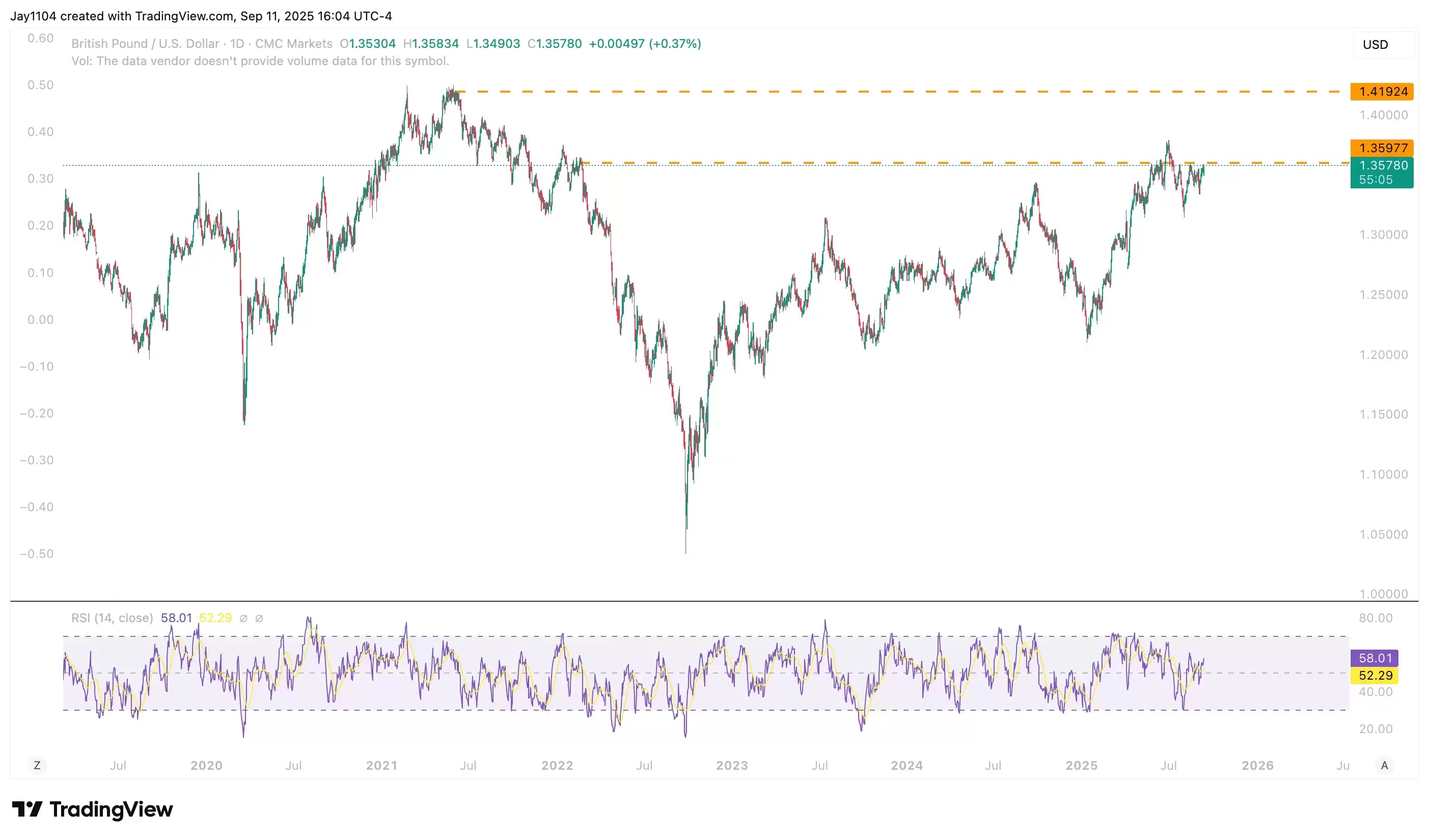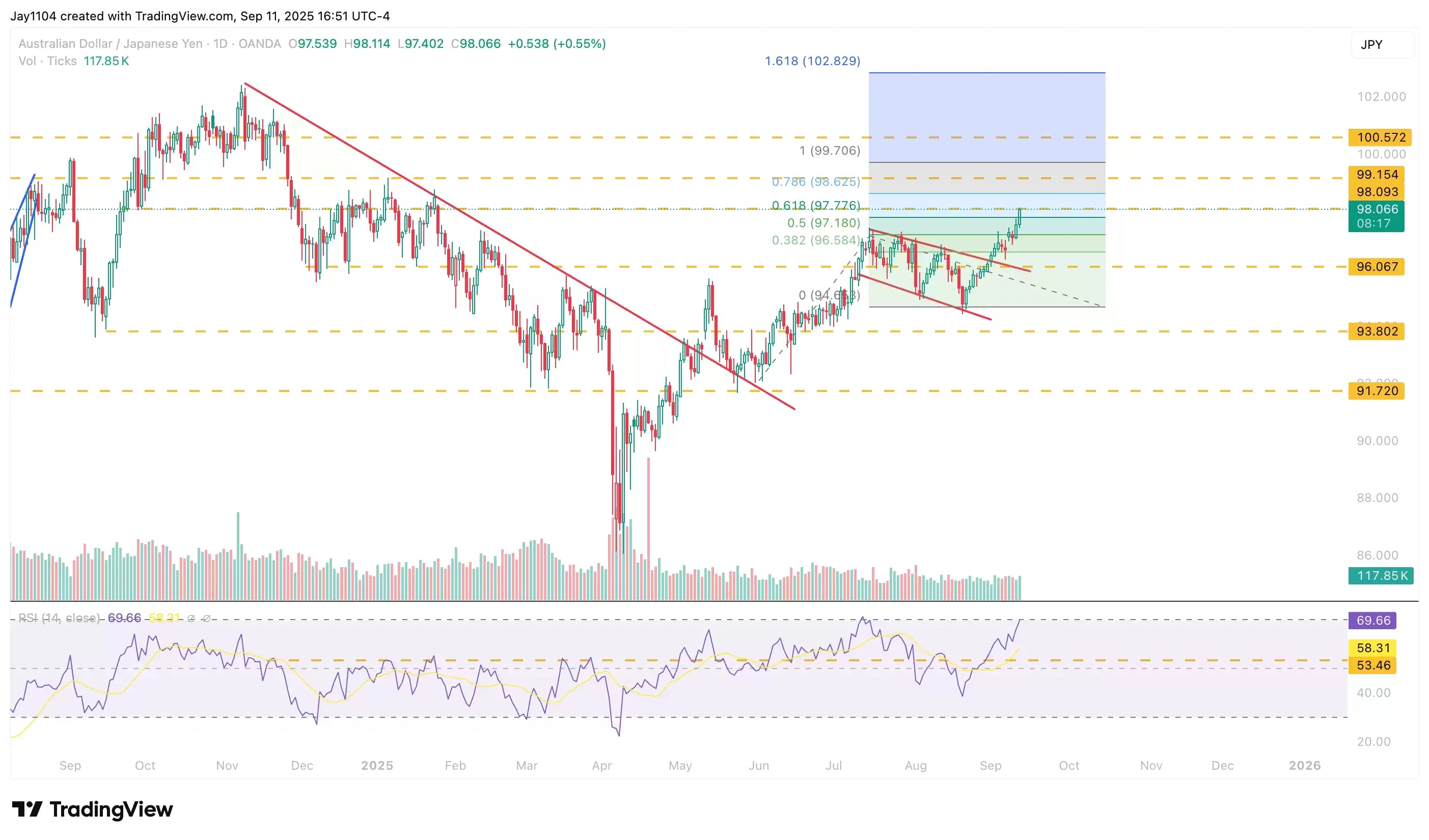Welcome to Michael Kramer’s pick of the key market events to look out for in the week beginning Monday 15 September.
Get ready for a busy week, with the Federal Reserve, the Bank of England and the Bank of Japan all set to announce monetary policy decisions. Ahead of their rate meetings, the UK and Japan will release inflation updates that could shape policymakers’ rate decisions and what they say about the future path of monetary policy. Also of note is Australia’s jobs report, which could have a bearing on whether AUD/JPY can keep moving higher. Combined, the coming week’s events are likely to stir up market volatility, particularly across currencies.
Central bank rate decisions
Wednesday 17 September (US Federal Reserve), Thursday 18 September (Bank of England), Friday 19 September (Bank of Japan)
The Federal Reserve is widely expected to cut interest rates, with the market pricing in a cut as a 100% probability – it’s seemingly just a question of whether policymakers cut by 25 or 50 basis points. The CME’s FedWatch tool suggests that the former is more likely. A cut of any size would be the Fed’s first rate reduction since December 2024. The Fed will also publish its Summary of Economic Projections, a quarterly report outlining the rate-setting committee’s forecasts for interest rates and other economic data points over the coming year.
Meanwhile, the Bank of England and the Bank of Japan are expected to keep rates unchanged in the face of persistent inflationary pressures. That said, the Bank of England is still expected to lower rates once more this year, possibly at its November meeting, in a bid to stimulate economic growth. In contrast, the Bank of Japan is expected to raise rates at some point in Q4, either in October or December. The market will look to the central banks’ statements and minutes for clues on the timing and the pace of any future changes in monetary policy.
If the Fed signals that it is about to embark on a series of rate cuts while the Bank of Japan signals a willingness to raise rates before the end of the year, the dollar-yen pair could rise. Over the past two months USD/JPY has moved sideways near ¥147.50 per dollar, despite the yield differential between US and Japanese five-year government bonds continuing to narrow. The more the spread between US Treasuries and Japanese government bonds (JGBs) compress, the more likely it becomes that USD/JPY will head towards ¥140. A BoJ commitment to higher rates could be what ultimately gets the yen to strengthen against the dollar.
USD/JPY vs yield differential between five-year US Treasuries and JGBs, July 2020 – present
 Sources: TradingView, Michael Kramer
Sources: TradingView, Michael Kramer
UK, Japan August CPI
Wednesday 17 September (UK), Thursday 18 September (Japan)
Both the UK and Japan will release consumer price data a day before their respective central banks make their interest rate decisions. While the two countries have faced persistent inflation pressures in recent months, CPI is rising in the UK (3.8% in July, up from 3.6% in June) but falling in Japan (3.1% in July, down from 3.3% in June). Nevertheless, inflation remains above target in both countries.
If inflation continues to pose a problem for the UK and Japan, then one would expect both countries’ central banks to maintain higher rates for longer. For the Bank of England in particular, this would imply fewer rate cuts or a delay to the rate-cutting timetable. That should be supportive for GBP/USD, which has been consolidating just below $1.36. A breakout could see GBP/USD target the $1.41 level over the longer term. Momentum, as measured by the relative strength index, is also consolidating and is nearing a potential break above a downtrend.
GBP/USD, July 2020 – present
 Sources: TradingView, Michael Kramer
Sources: TradingView, Michael Kramer
Australia August jobs report
Thursday 18 September
Australian labour market data has weakened in recent months, with the number of jobs created falling and the unemployment rate trending higher, although last month’s figures did show signs of improvement. If the employment trends have turned a corner and the signs of improvement continued into the upcoming report, it could support further gains in AUD/JPY. The pair has risen from a year-to-date low of about ¥87 per Australian dollar in April to current levels near ¥98.
This month AUD/JPY appears to have broken out of a bull flag to the upside, and is now testing resistance at ¥98.10. A conservative projection suggests that AUD/JPY could move higher, with an extension of the breakout potentially putting it on course to rise towards ¥99 and possibly as high as ¥101.
AUD/JPY, September 2024 – present
 Sources: TradingView, Michael Kramer
Sources: TradingView, Michael Kramer
Major upcoming economic announcements and scheduled US and UK company reports include:
Monday 15 September
• China: August retail sales, August industrial production
• Results: No major scheduled earnings announcements
Tuesday 16 September
• Canada: August consumer price index (CPI)
• Japan: August exports, imports and trade balance
• UK: August unemployment rate, August claimant count change
• US: August retail sales
• Results: Ferguson Enterprises (Q4), JTC (HY), Kier (FY), Trustpilot (HY)
Wednesday 17 September
• Canada: Bank of Canada interest rate decision
• Eurozone: August harmonised CPI
• New Zealand: Q2 gross domestic product (GDP)
• UK: August CPI
• US: Federal Reserve interest rate decision
• Results: Barratt Redrow (FY), General Mills (Q1)
Thursday 18 September
• Australia: August unemployment rate, August employment change
• Japan: August CPI
• New Zealand: August imports, exports and trade balance
• UK: Bank of England interest rate decision
• US: Weekly initial jobless claims
• Results: Darden Restaurants (Q1), FactSet Research Systems (Q4), FedEx (Q1), Next (HY), Renishaw (FY)
Friday 19 September
• Canada: July retail sales
• Japan: Bank of Japan interest rate decision
• UK: August retail sales
• Results: Lennar (Q3)
Note: While we check all dates carefully to ensure that they are correct at the time of writing, the above announcements are subject to change.
Disclaimer: CMC Markets is an execution-only service provider. The material (whether or not it states any opinions) is for general information purposes only, and does not take into account your personal circumstances or objectives. Nothing in this material is (or should be considered to be) financial, investment or other advice on which reliance should be placed. No opinion given in the material constitutes a recommendation by CMC Markets or the author that any particular investment, security, transaction or investment strategy is suitable for any specific person. The material has not been prepared in accordance with legal requirements designed to promote the independence of investment research. Although we are not specifically prevented from dealing before providing this material, we do not seek to take advantage of the material prior to its dissemination.

